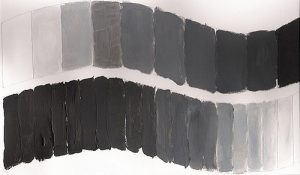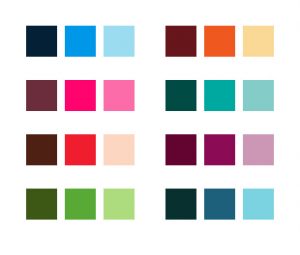Permanent window paint and the effect of value
In the last post, we looked at hue, the first of the chromatic properties that’s used to describe color. Hue is the correct term for color, so when you name a color, you’re actually referring to hue. The second chromatic property we’ll look at is value. Value comes into play when you’re choosing permanent window paint because it describes the “lightness” or “darkness” of a color.
Another word for value is “tone.” Value is independent of hue. You can best understand value by thinking of a color photograph whose color has been removed. The picture effectively becomes a black-and-white photo. You can still see the image and depth, but the color has been replaced by “grayscale.” Various values of gray help determine the contrast between objects in the image.
Permanent window paint can be a brilliant solution
Value is important because variations in value can create depth. If you intend to undertake a permanent window paint project, using colors with various values can create a beautiful, eye-catching look.
Any paint project can be transformed by using paints with various values. Whether you’re painting a wall or painting on glass, the value is what gives the paint its contrast. If you choose two or more colors that have the same or similar value, your finished project will have a “flat” look. The similarity in the value of your colors means that your colors have different hues, but they don’t contrast very much. If you work with colors with visibly different values, your finished project will have significant depth. The colors will “pop” off the surface of your project.
In a permanent window paint project, depth can really add something unique. If you’re working with a paint palette that includes a variety of colors, keep “value” in mind when you’re choosing your paint colors. A palette that has a range of values will be vibrant and pleasing to the eye. A palette whose values are all similar will produce a flat – and perhaps uninteresting – look.
In the next post, we’ll look at the third chromatic property – chroma – and how that rounds out the description of color. In the meantime, if you’re looking for permanent window paint, please visit the rest of our site at http://www.glasspaint.com.
Photo Credit: Matthieu Tremblay, via Flickr.com


